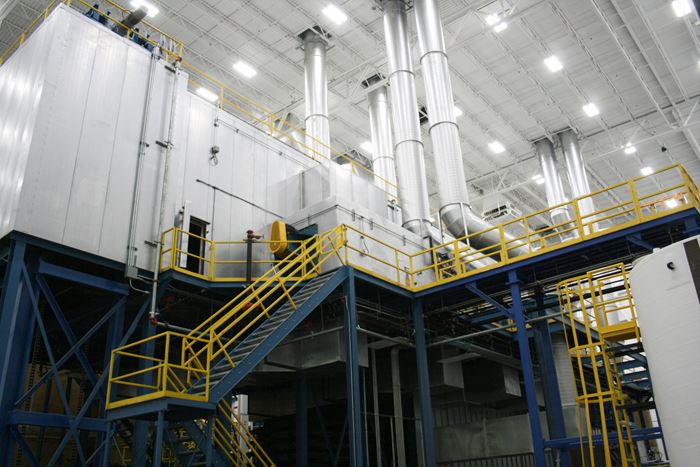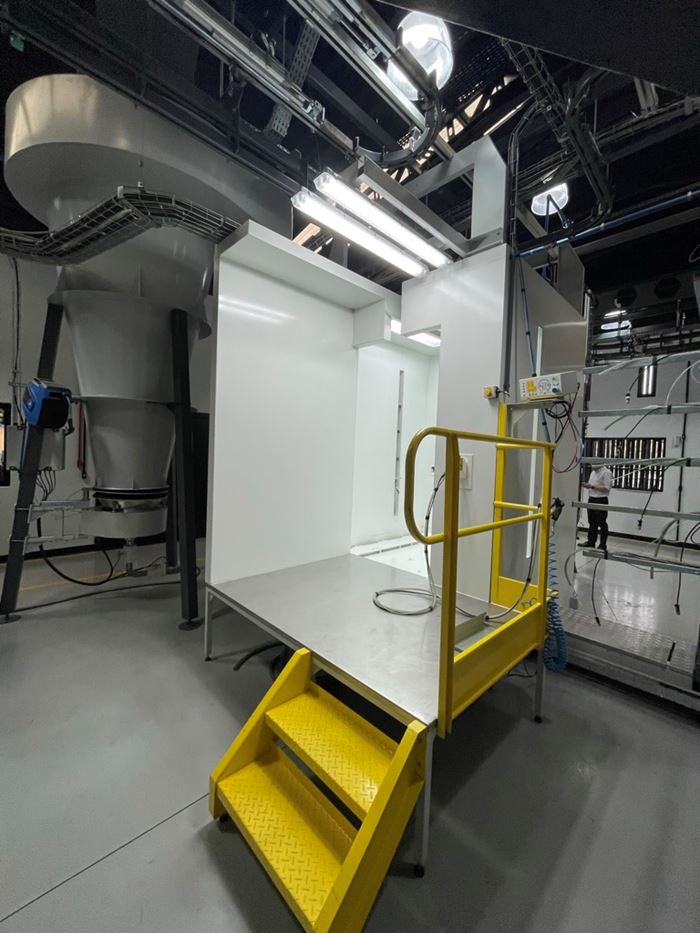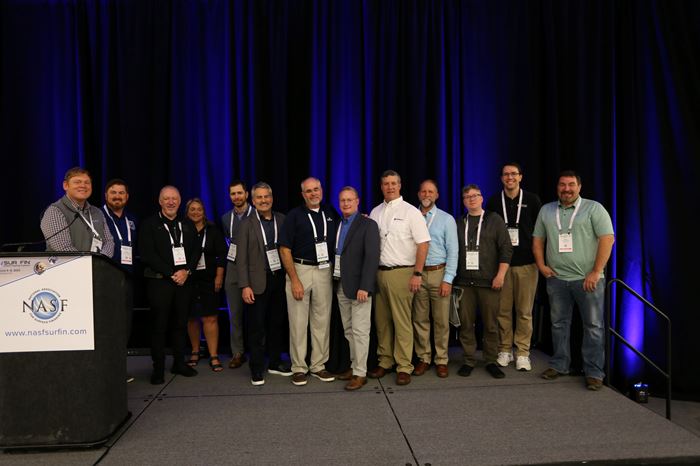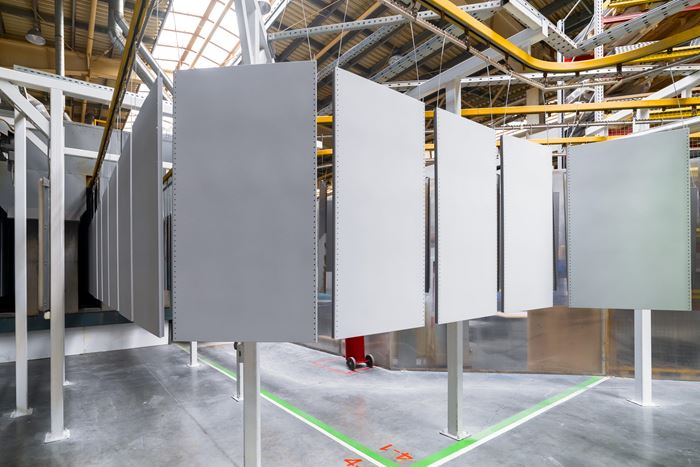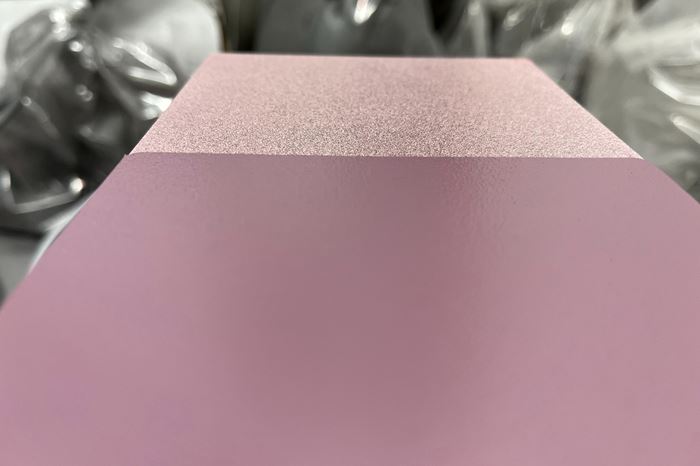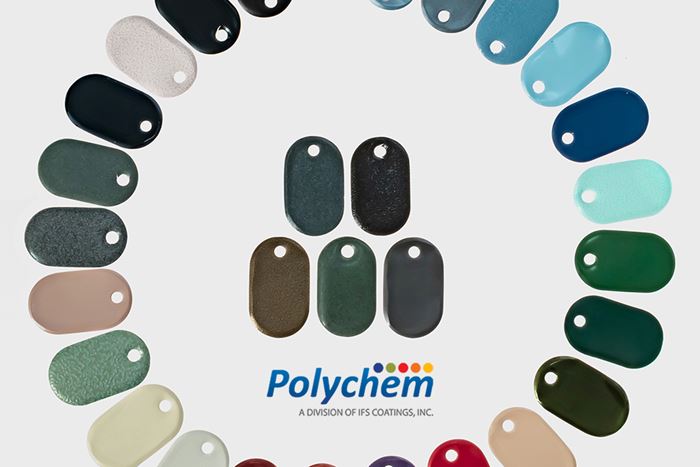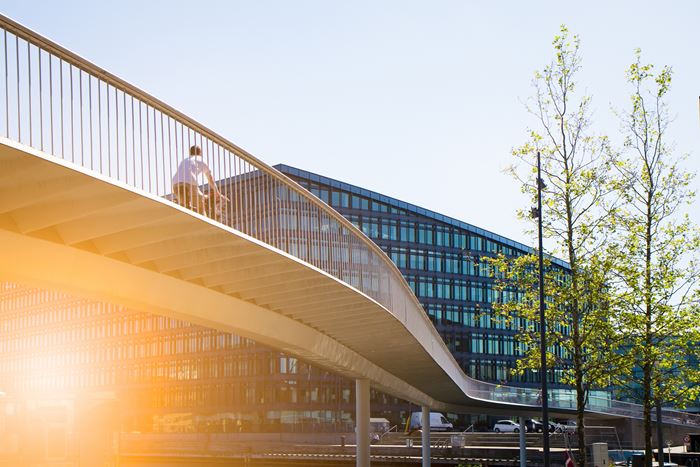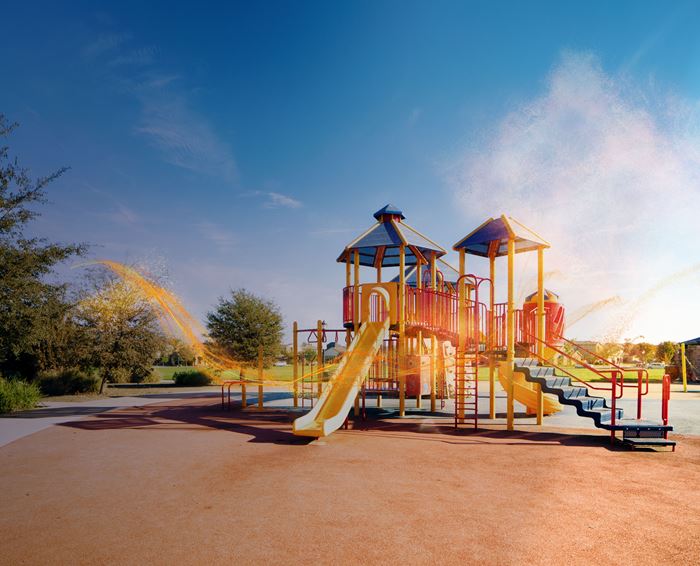Powder coating is a dry finishing process using sprayers to apply finely ground paint particles to a substrate using electrostatic charge. Powder adheres to the substrate by electrostatic attraction until melted and fused into a uniform coating in a curing oven.
Curing Oven Basics
Simply heating up the substrate does not cure the coating. There are many variables to consider when choosing the best cure oven for your application...
Powder Coating: Essential Reading
Choosing the Right Powder Booth Technology
Is your powder coating operation experiencing an increasing number of color change requirements? Nicolas Gervaise of Carlisle Fluid Technologies discusses fast color change single booth configurations for powder coating.
Conveyors and Paint Systems
Choosing the right conveyor system, coating technology, and ancillary equipment.
How to Build a Powder Coating Brand
Maui Powder Works, a 2022 Products Finishing Top Shop, shares the story behind how it grew from an island job shop to a recognized voice in the finishing community.
Calculating the Cost of Powder Coating
How can you calculate the cost of powder coating a component if you only know its surface area? Powder coating expert Rodger Talbert has the answer.
Powder Coat MDF for an Enviable Finished Product
Cabinet maker says powder coating on wood offers more benefits.

FAQ: Powder Coating
What is powder coating?
Powder coating is a dry finishing process used to apply a dry coating material. The coating material is made up of finely ground particles of resin and pigment for color, along with other additives for specific functions such as gloss or hardness. The dry powder coating is delivered to a spray gun tip that is fitted with an electrode to provide an electrostatic charge to the powder as it passes through a charged area at the gun tip. The charged powder particles are attracted to a grounded part and are held there by electrostatic attraction until melted and fused into a uniform coating in a curing oven.
https://www.pfonline.com/articles/fundamentals-of-powder-coating
What powder coating is best for my job?
“We must begin by explaining the basic chemistries available in the market today. We’ll cover the basic advantages and key disadvantages that each one of these possesses. Moving forward, some key groupings of exposure must be understood. Examples include accelerated weathering, salt fog and moisture, chemical resistance, flexibility for post-cure bending, durability (both physical and exposure-related) and others.
How to powder coat plastic parts?
The number of plastic parts painted and coated is growing—and in a practically unlimited scope of diversity. In order to avoid painting defects and optimize quality, it pays to carefully scrutinize the entire process. A number of challenges need to be met to this end. These include optimized quality along with strong economic efficiency and sustainability. This is further augmented by ever smaller lot quantities and an increasing variety of colors.
https://www.pfonline.com/articles/coating-plastic-parts-more-efficiently
What coating system gives the best long-term coating performance?
If asked what gives the best protection against corrosion and UV exposure, it would be electrocoat and a super durable powder coating. Whether you have a zirconium pretreatment system or zinc phosphate pretreatment system, either will give very good corrosion performance. The super durable powder coating will give the best weathering performance, meaning color fade and gloss retention in sun-exposed areas.
https://www.pfonline.com/articles/powder-coat-systems-with-the-best-long-term-performance
What is the cost of powder coating?
Calculating the coating cost of a particular part starts with gathering the variables associated with that part. What is the part size, how many of them can you fit into your coating process per hour and how much surface area will be coated?
This process data is used to determine the parts per hour so that the hourly costs can be broken down into a cost per part. The number of pieces per rack, racking centers and line speed can be used to determine the production volume per hour at 100-percent efficiency. This number should be adjusted to compensate for breaks or other factors that reduce the line efficiency.
https://www.pfonline.com/articles/how-to-calculate-the-cost-of-powder-coating

Powder Coating Suppliers
Narrow by Powder Coating Category
- Powder Coating Equipment, Electrostatic Spray
- Powder Coating Equipment, Fluidized Bed
- Powder Coating Equipment, Fluidized Bed, Electrostatic
- Powder Coating Recovery Systems
- Powder Coating Sieves, Screening Devices, Sifters
- Powder Coating Systems, Engineering & Installation
- Powder Coating Testing Equipment
- Powder Coatings
- Powder Coatings, Thermoplastic
- Powder Coatings, Thermoset
- Spray Booth Cleaning Materials
- Spray Booth Coatings
- Spray Booth Compounds, Water Wash
- Spray Booth Lighting Fixtures
- Spray Booth Sludge Removal Systems
- Spray Booths, Paint & Powder Coating
- Spray-Gun Controls, Memory
- Spray-Gun Washers
- Spray-Gun Movers, Paint or Powder Coating
- Spray-Mask-Painting Barrier Coatings
- Tape, Masking for Plating & Painting


